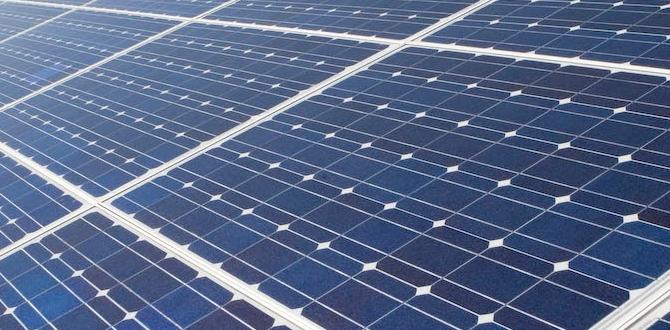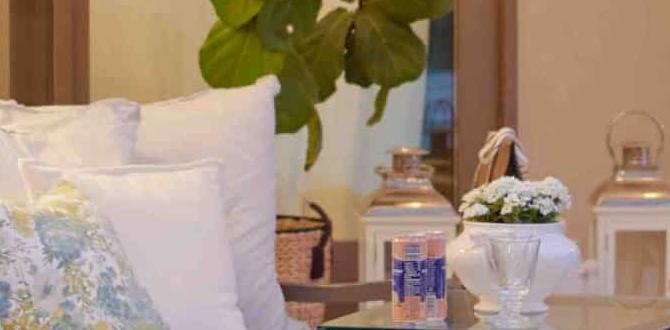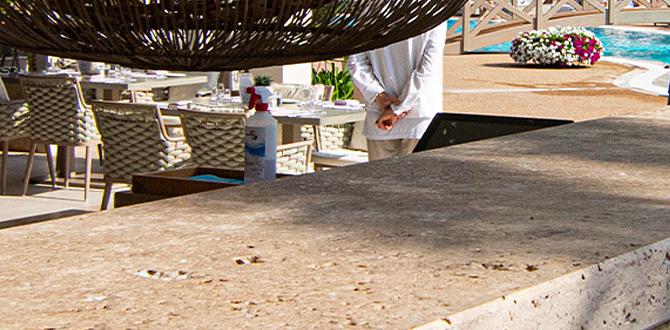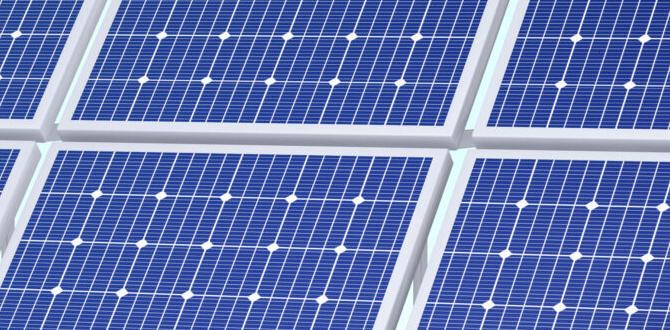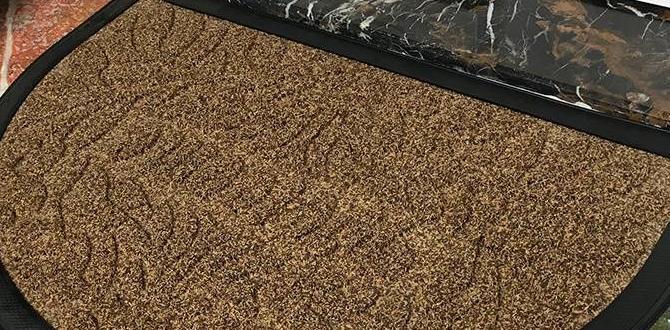Picture this: You’re excitedly packing for a vacation. You can’t wait to explore new places. But then, you remember your outdoor plants. What will happen to them while you’re away for two weeks? They need water every day!
Many people worry about their plants when they travel. Leaving them unattended can lead to sad, wilted leaves. But don’t worry! There are easy ways to keep them happy and healthy.
Did you know that some plants can survive for weeks without being watered? However, most of them need some help. In this article, we’ll discover different tricks on how to water outdoor plants while away. You won’t have to sacrifice your vacation for their well-being!
So, let’s dive into simple solutions that will keep your plants thriving, even when you’re relaxing on the beach!
How To Water Outdoor Plants While Away For 2 Weeks
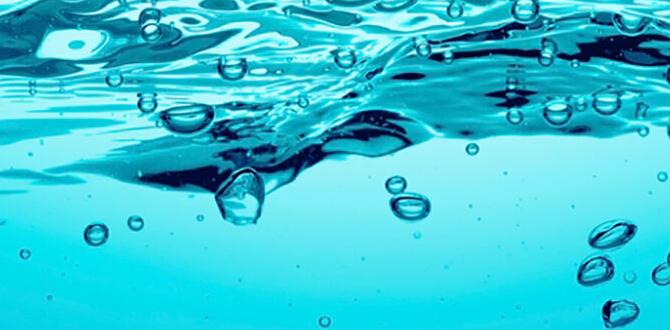
How to Water Outdoor Plants While Away for 2 Weeks
Are you worried about your outdoor plants when you go on vacation for two weeks? You’re not alone! Many people fret over their plants while they’re away. One great trick is to use self-watering stakes. You can fill them with water, and they slowly drip as the soil dries out. Another option is to group your plants together. This creates a mini ecosystem, keeping humidity higher. Remember to water thoroughly before you leave, and consider asking a neighbor for help! Your plants will thank you.Understanding Plant Water Requirements
Different water needs based on plant types. Signs of underwatering and overwatering.Plants are like people; they each have unique water needs. Some love it wet, while others prefer a drier vibe. For instance, succulents and cacti enjoy dry soil, while thirsty flowers like petunias need regular drinks. If you see wilting leaves or dry soil, your plants might be crying for water—signs of underwatering. On the flip side, if leaves turn yellow and the soil feels muddy, you might be overdoing it. Keep an eye on your green buddies, so they don’t turn into sad plants!
| Plant Type | Water Needs | Signs of Underwatering | Signs of Overwatering |
|---|---|---|---|
| Succulents | Low | Wrinkled leaves | Soft, mushy leaves |
| Petunias | Medium | Wilting | Yellow, droopy leaves |
| Ferns | High | Dry, crispy edges | Dark spots on leaves |
Preparation Before Leaving
Assessing plant health and hydration levels. Adjusting watering schedule prior to departure.Before you head out on your adventure, check your plants! Look at their leaves and soil. Healthy plants are usually bright and green, while thirsty ones show droopy leaves. Water them well a few days before you leave. Your plants will thank you for a little hydration boost! You can even set up a mini watering schedule to make sure they’re ready for your absence.
| Plant Type | Watering Needs |
|---|---|
| Succulents | Water every 2 weeks |
| Ferns | Water every 3-4 days |
| Flowering Plants | Water weekly |
Methods for Watering While Away
Selfwatering systems: types and setup. Use of drip irrigation systems for consistent moisture.Worried about your plants while you’re away? Don’t fret! There are fun and easy ways to keep them happy. Self-watering systems can save the day! They come in two types: spike systems and wicking systems. Simply set them up before you leave, and your plants will sip water like a fancy café. Then there’s drip irrigation, which gives plants a steady stream of moisture. It’s like giving your garden a daily drink. You’ll find your plants thriving when you return!
| System Type | Description |
|---|---|
| Spike System | Water goes directly to the roots through a spike. Simple and effective! |
| Wicking System | Uses a wick to draw water from a container. A clever solution! |
| Drip Irrigation | Delivers water slowly through a network of tubes. Perfect for big gardens! |
Alternative Solutions for Short-term Absences
Watering globes and spikes: pros and cons. Using capillary mats for steady moisture supply.Need to leave your plants for a bit? No worries! Watering globes and spikes can help. They slowly release water to keep plants happy. However, they may not suit all plant types. Capillary mats are another option, providing a steady moisture supply. Just lay them under your pots, and let them do the work! Remember, plants can be drama queens, so keep them cozy while you’re away!
| Method | Pros | Cons |
|---|---|---|
| Watering Globes | Easy to use, visually appealing | May clog, not enough for thirsty plants |
| Capillary Mats | Consistent moisture, great for multiple pots | Requires space, can be pricey |
Enlisting Help from Friends or Neighbors
Creating a watering plan for your helper. Providing instructions and necessary supplies.When you ask a friend or neighbor for help, it’s like getting a backup superhero! First, create a simple watering plan. Make a schedule with clear dates and times. Next, write easy instructions. Show them where to find the plants and how much water each one needs. Don’t forget to gather supplies, like watering cans or a hose. Here’s a quick table to keep everything organized:
| Day | Instructions | Supplies Needed |
|---|---|---|
| Monday | Water all pots | Watering can |
| Wednesday | Check for dry leaves | Garden gloves |
| Friday | Water hanging plants | Hose |
With a little help, your plants will stay happy while you enjoy your trip! Watering buddies make plant care fun, and who doesn’t love a little teamwork?
Utilizing Technology for Plant Care
Smart irrigation systems and automated timers. Mobile apps for monitoring soil moisture levels.Technology is your green thumb’s best friend! Smart irrigation systems make watering a breeze. These systems can automatically water your plants based on the weather. How cool is that? Automated timers are like little robots that water your plants while you sip coconut water on the beach!
Mobile apps also keep you in the loop. You can check soil moisture levels right from your phone. Imagine receiving a message saying, “Your plants are thirsty!” and you’re still lounging by the pool. Technology makes plant care easy and fun!
| Feature | Description |
|---|---|
| Smart Irrigation | Automatically waters based on weather. |
| Automated Timers | Schedules watering times for you. |
| Mobile Apps | Monitors soil moisture from anywhere. |
Remember to embrace technology, and your plants will thrive even when you’re away. So go ahead, enjoy your trip, and let the gadgets do the dirty work!
Assessing Post-Return Plant Health
Signs of stress and recovery tips. Best practices for rehydrating plants after two weeks without water.After returning home, check your plants closely. Look for signs of stress. Leaves may be droopy or yellow. The soil might feel dry and cracked. To help your plants recover, follow these tips:
- Water them slowly to avoid shocking the roots.
- Use room temperature water.
- Add a diluted plant food to help them bounce back.
Monitor the plants for new growth, which means they are recovering. Patience is key; they just need a little time!
What are signs of stress in outdoor plants?
Signs of stress include wilting leaves, discoloration, and dry soil. Look for these clues after being away.
What are the best practices for rehydrating plants after two weeks?
Water them thoroughly, use room temperature water, and consider a diluted fertilizer. These steps can revive your plants effectively.
Conclusion
In summary, you can keep your outdoor plants healthy while away for two weeks by using methods like self-watering devices, mulch, and deep watering. Group plants together to create shade and retain moisture. Don’t forget to ask a neighbor for help if needed. Explore more tips online to ensure your plants thrive while you’re gone!FAQs
What Are The Best Methods For Keeping Outdoor Plants Hydrated While I’M Away For Two Weeks?To keep your outdoor plants hydrated while you’re away, you can use a few simple methods. First, water your plants deeply right before you go. This helps them hold moisture longer. Second, you can make a DIY drip system using a plastic bottle. Just poke holes in the cap, fill it with water, and bury it upside down in the soil. Finally, ask a friend or neighbor to water your plants while you’re gone.
How Can I Set Up A Drip Irrigation System For My Outdoor Plants Before Leaving?To set up a drip irrigation system, you need a few pieces. First, get a drip hose and some connectors. Next, lay the hose around your plants, so each one gets water. You can use a timer to turn the water on and off. Finally, test it to make sure it works before you leave!
Are There Any Natural Watering Techniques, Such As Using Self-Watering Containers Or Soil Moisture-Retaining Products, That Can Help During My Absence?Yes, there are some smart ways to water your plants when you’re not around. You can use self-watering containers. These help keep the soil moist for a longer time. You can also try adding moisture-retaining products to the soil. They hold water and keep your plants happy while you’re away.
Should I Ask A Neighbor Or Friend To Help With Watering, And If So, How Do I Provide Clear Instructions About My Plants’ Needs?Yes, you can ask a neighbor or friend for help. To give clear instructions, tell them how often to water your plants. You can say, “Water them every two days.” Show them how much water to use. You can also point out which plants need more or less water. This way, they will know exactly what to do!
What Specific Signs Of Dehydration Should I Look For Upon My Return To Ensure My Outdoor Plants Were Properly Cared For While I Was Away?When you return, check if the leaves are wilted or droopy. If they look brown or crispy, that’s a bad sign. The soil might be hard and dry too. You can also look for yellowing leaves. If your plants look sad, they might need water!
{“@context”:”https://schema.org”,”@type”: “FAQPage”,”mainEntity”:[{“@type”: “Question”,”name”: “What Are The Best Methods For Keeping Outdoor Plants Hydrated While I’M Away For Two Weeks? “,”acceptedAnswer”: {“@type”: “Answer”,”text”: “To keep your outdoor plants hydrated while you’re away, you can use a few simple methods. First, water your plants deeply right before you go. This helps them hold moisture longer. Second, you can make a DIY drip system using a plastic bottle. Just poke holes in the cap, fill it with water, and bury it upside down in the soil. Finally, ask a friend or neighbor to water your plants while you’re gone.”}},{“@type”: “Question”,”name”: “How Can I Set Up A Drip Irrigation System For My Outdoor Plants Before Leaving? “,”acceptedAnswer”: {“@type”: “Answer”,”text”: “To set up a drip irrigation system, you need a few pieces. First, get a drip hose and some connectors. Next, lay the hose around your plants, so each one gets water. You can use a timer to turn the water on and off. Finally, test it to make sure it works before you leave!”}},{“@type”: “Question”,”name”: “Are There Any Natural Watering Techniques, Such As Using Self-Watering Containers Or Soil Moisture-Retaining Products, That Can Help During My Absence? “,”acceptedAnswer”: {“@type”: “Answer”,”text”: “Yes, there are some smart ways to water your plants when you’re not around. You can use self-watering containers. These help keep the soil moist for a longer time. You can also try adding moisture-retaining products to the soil. They hold water and keep your plants happy while you’re away.”}},{“@type”: “Question”,”name”: “Should I Ask A Neighbor Or Friend To Help With Watering, And If So, How Do I Provide Clear Instructions About My Plants’ Needs? “,”acceptedAnswer”: {“@type”: “Answer”,”text”: “Yes, you can ask a neighbor or friend for help. To give clear instructions, tell them how often to water your plants. You can say, Water them every two days. Show them how much water to use. You can also point out which plants need more or less water. This way, they will know exactly what to do!”}},{“@type”: “Question”,”name”: “What Specific Signs Of Dehydration Should I Look For Upon My Return To Ensure My Outdoor Plants Were Properly Cared For While I Was Away? “,”acceptedAnswer”: {“@type”: “Answer”,”text”: “When you return, check if the leaves are wilted or droopy. If they look brown or crispy, that’s a bad sign. The soil might be hard and dry too. You can also look for yellowing leaves. If your plants look sad, they might need water!”}}]}
